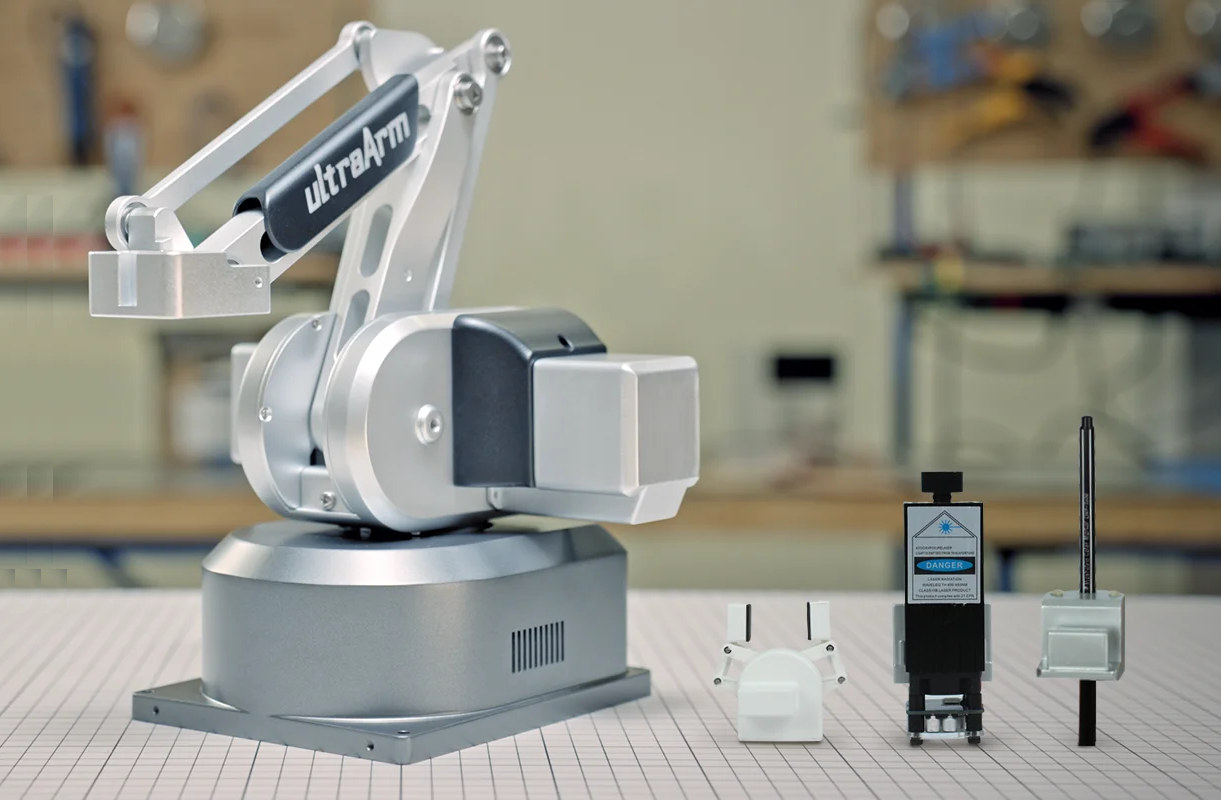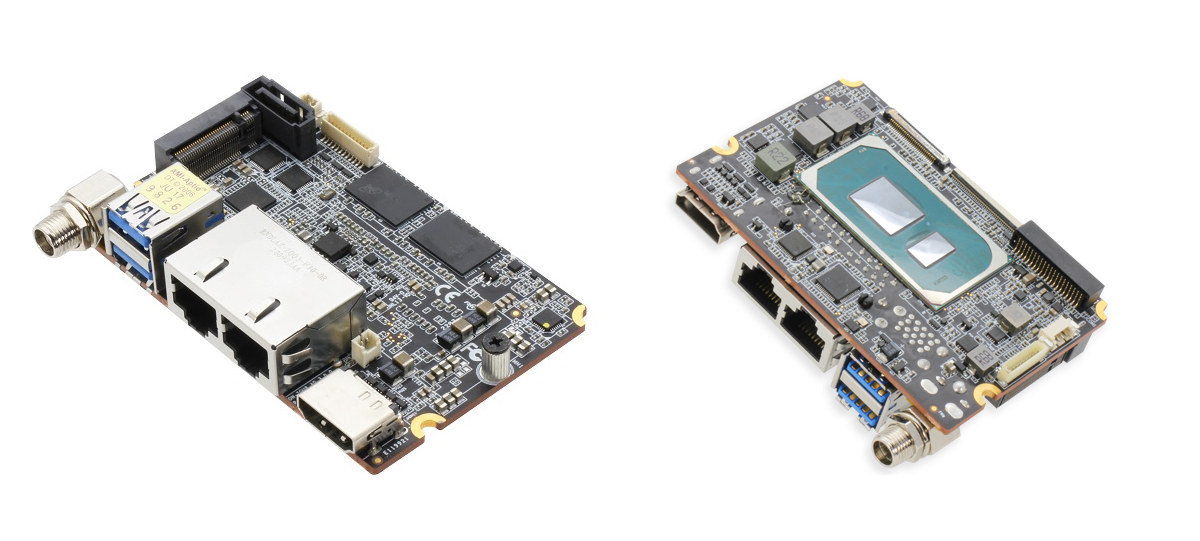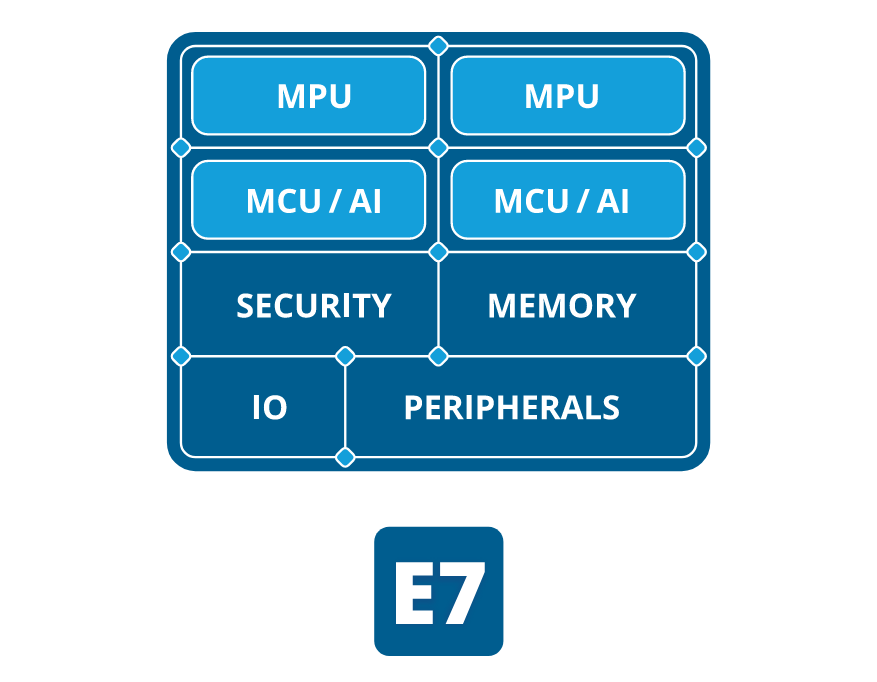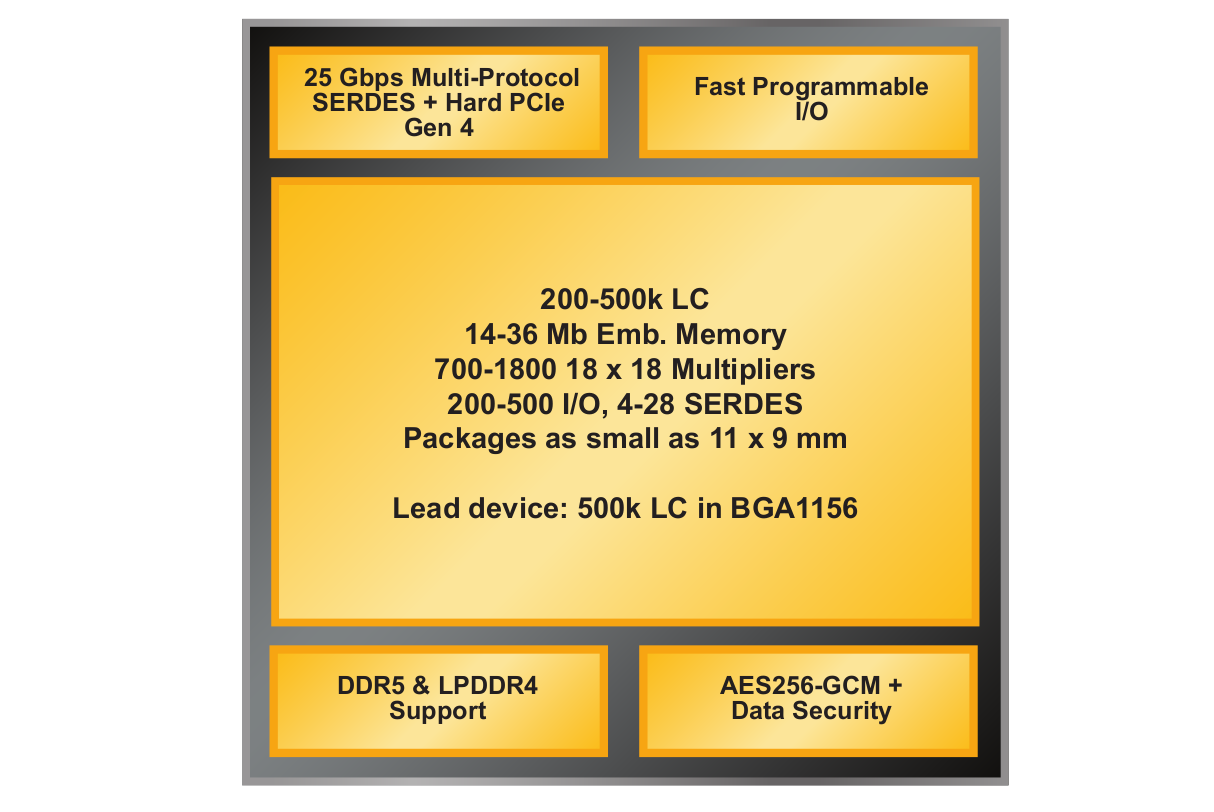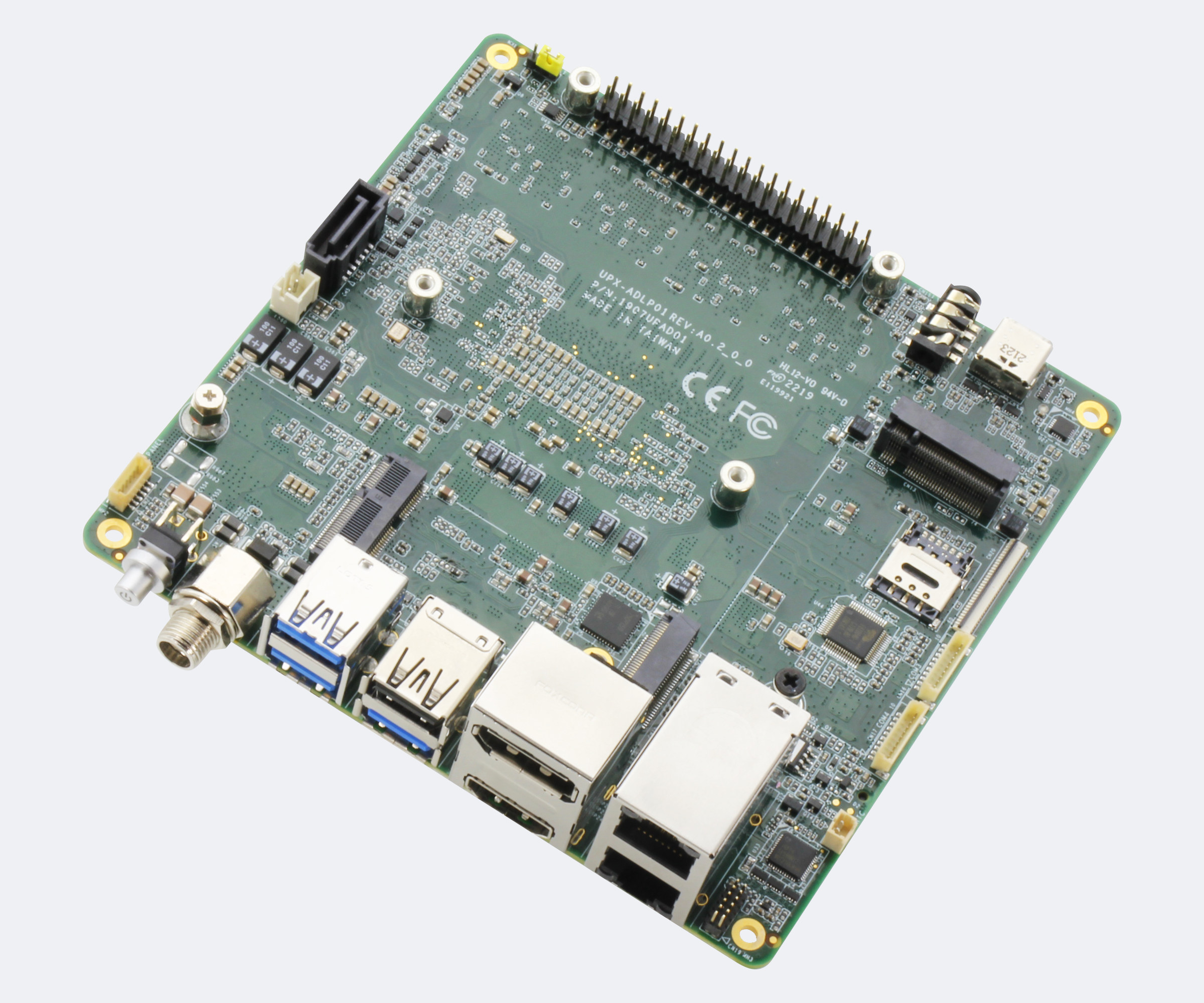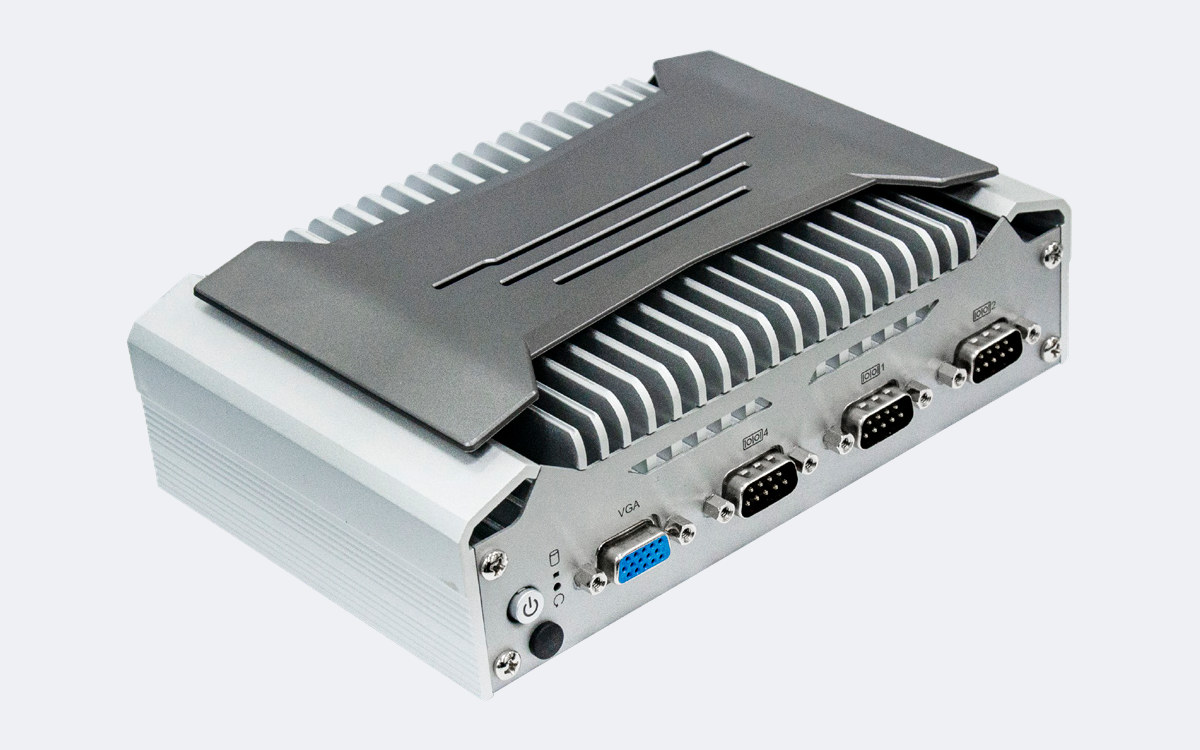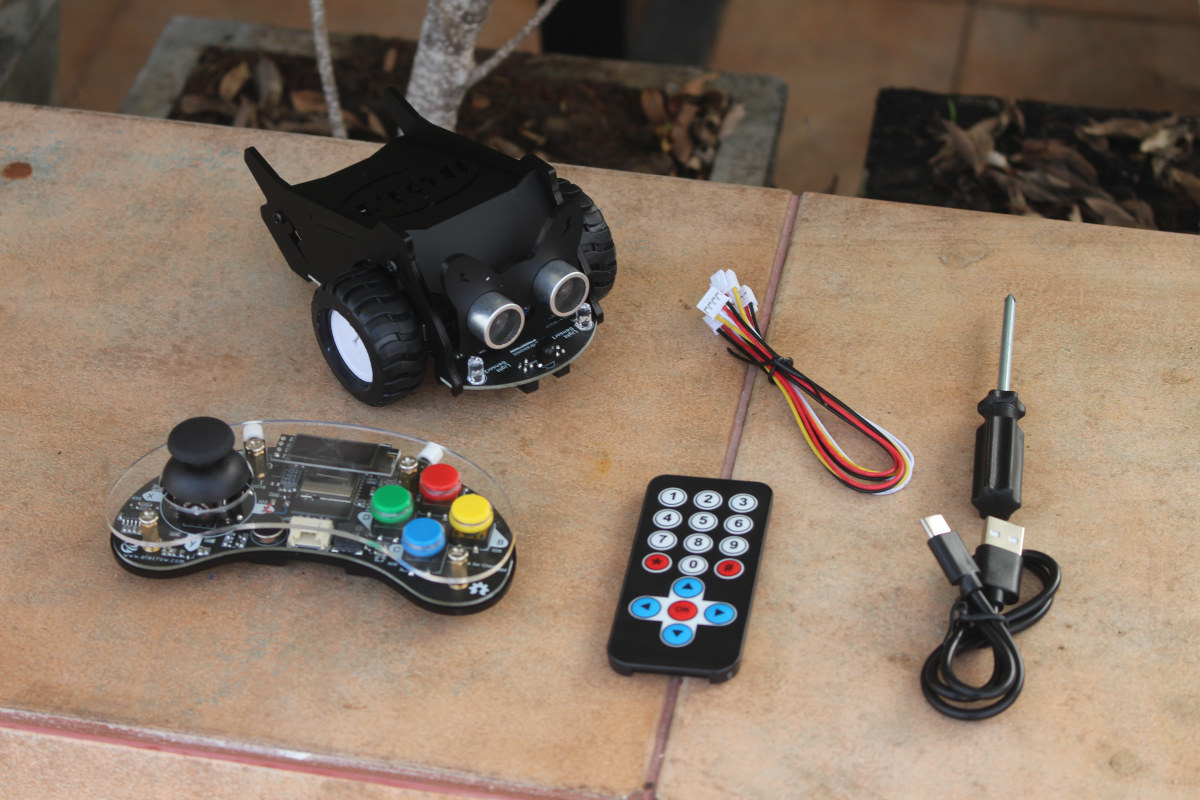Elephant Robotics ultraArm P340 is a robot arm with an Arduino-compatible ATMega2560 control board with a 340mm working radius whose arm can be attached with different accessories for drawing, laser engraving, and grabbing objects. We’ve previously written and reviewed the myCobot 280 Pi robotic arm with a built-in Raspberry Pi 4 SBC, but the lower-cost ultraArm P340 works a little differently since it only contains the electronics for controlling the servos and attachments, and needs to be connected to a host computer running Windows or a Raspberry Pi over USB. ultraArm P340 specifications: Control board based on Microchip ATMega2560 8-bit AVR microcontroller @ 16MHz with 256KB flash, 4Kb EEPROM, 8KB SRAM DOF – 3 to 4 axis depending on accessories Working radius – 340mm Positioning Accuracy – ±0.1 mm Payload – Up to 650 grams High-performance stepper motor Maximum speed – 100mm/s Communication interfaces – RS485 and USB serial Attachment […]
Elephant Robotics Christmas 2022 sales (Sponsored)
Elephant Robotics is back with another promotional event for Christmas 2022 selling educational robotic kits and toys with up to a $400 discount until December 26, 2022. The highest discount is for the Raspberry Pi 3-powered MarsCat selling for $999, or $400 less than the original price tag of $1,399, but the company also offers an $80 discount for all robotic arms from the company including the myCobot and mechArm robotic arms, myBuddy dual arm system, and myPalletizer compact 4-axis robotic arm, as well as the myAGV four-wheel drive vehicle. If you use the coupon code Xmas, you’ll get a $50 on the metaCat robotic plush toy / smart cat. Finally, all orders over $3,000 qualify for free shipping with the FREESHIP3000 coupon code. The exact same promotions are available on the Elephant Robotics’ Amazon store. If you prefer doing your shopping on Aliexpress instead, Elephants Robotics has more Chrismas […]
Business card-sized SBC ships with Intel Core Tiger Lake or AMD Ryzen V2000 processor
We’ve recently reviewed the UP 4000 SBC as a more powerful x86 alternative to Raspberry Pi 4, but if it still does not cut it, AAEON de next-TGU8 or de next-V2K8 should, as the business card-sized single board computers (SBC) are equipped with respectively an Intel Tiger Lake processor up to a Core i7-1185G7E, and an AMD Ryzen Embedded V2000 SoC up to Ryzen Embedded V2516. But the comparison stops at the size, as both SBCs offer sets of features different from the usual Raspberry Pi form factor with notably up to 16GB RAM, SATA and NVMe storage, dual Ethernet (1x 2.5GbE, 1x Gigabit Ethernet), dual 4K display output via HDMI and eDP, some USB 3.2 ports, as well as serial and I/O interfaces via headers. de next-TGU8/V2K8 SBC specifications: SoC de next-TGU8 Intel Core i7-1185G7E quad-core/octa-thread processor @ 1.80GHz / 4.40GHz with Intel UHD graphics; TDP: 15W (TPD up: […]
Alif Ensemble Cortex-A32 & Cortex-M55 chips feature Ethos-U55 AI accelerator
Alif Semiconductor’s Ensemble is a family of processors and microcontrollers based on Arm Cortex-A32 and/or Cortex-M55 cores, one or two Ethos-U55 AI accelerators, and plenty of I/Os and peripherals. Four versions are available as follows: Alif E1 single-core MCU with one Cortex-M55 core @ 160 MHz, one Ethos U55 microNPU with 128 MAC/c Alif E3 dual-core MCU with one Cortex-M55 core @ 400 MHz, one Cortex-M55 core @ 160 MHz, one Ethos U55 with 256 MAC/c, one Ethos U55 with 128MAC/c Alif E5 triple-core fusion processor with one Cortex-A32 cores @ 800 MHz, one Cortex-M55 core @ 400 MHz, one Cortex-M55 core @ 160 MHz, one Ethos U55 with 256 MAC/c, one Ethos U55 with 128MAC/c Alif E7 quad-core fusion processor with two Cortex-A32 cores @ 800 MHz, one Cortex-M55 core @ 400 MHz, one Cortex-M55 core @ 160 MHz, one Ethos U55 with 256 MAC/c, one Ethos U55 with […]
Lattice Avant mid-range FPGA platform features up to 500K logic cells, 25 Gbps SERDES, Hard PCIe Gen4
Lattice Avant is a new low-power and small form factor mid-range FPGA platform, manufactured with a 16nm FinFET process, and equipped with 25 Gb/s SERDES, hardened PCI Express, external memory PHY interfaces, a high DSP count, and a security engine. Lattice Semi is better known for its entry-level FPGAs such as the iCE40 which is popular in the community thanks to low-cost hardware and support for open-source tools, but the Avant platform marks the company’s entry into the mid-range FPGA market, defined by chips with 100k to 500k logic cells (LCs). Lattice Avant highlights: FPGA fabric – 200K to 500K logic cells up to 350 MHz DSP – 700 to 1,8000 18×18 multipliers @ up to 650 MHz to support the latest AI algorithms Memory 14-36 Mbit embedded memory up to 650 MHz DDR3L/DDR4/LPDDR4 and DDR5 support I/Os 4x to 28x 25 Gbps multi-protocol SERDES Hard PCIe Gen4 200 to […]
UP Xtreme i12 Alder Lake SBC supports up to four 4K displays @ 60 Hz, Raspberry Pi HATs
AAEON has just introduced the UP Xtreme i12 single board computer (SBC) with Intel 12th generation Alder Lake-P hybrid SoC with up to 12 cores/16 threads, up to 32GB LPDDR5 memory, support for four 4Kp60 displays, and equipped with high-speed interfaces such as USB 4.0 and 2.5 GbE. The board also features four M.2 sockets for NVMe storage, Wi-Fi 6 and 5G cellular connectivity, a SATA III port, several USB 3.2/2.0 Type-A ports, and a 40-pin GPIO header and mounting thread for Raspberry Pi HATs, which should make it especially suitable for IoT, robotics, and smart retail applications, as well as smart manufacturing with a 12 to 36V wide supply voltage range. UP Xtreme i12 specifications: Alder Lake-P SoC (One or the other) Intel Core i7-1270PE 12-core/16-thread processor @ 3.30GHz / 4.50GHz (Turbo) with 96EU Intel Xe graphics – PBP: 28W, up to 64W MTP Intel Core i5-1250PE 12-core/16-thread processor […]
DFI EC70A-TGU embedded computer promises long-term support until 2035 (at least)
Some industries require long-term support of hardware, and DFI’s EC70A-TGU rugged embedded computer could fit the bill as the Tiger Lake IOTG processor used in this model has a 15-Year CPU life cycle guaranteeing availability until Q3 2035. The fanless computer is equipped with 8GB RAM, supports M.2 NVMe SSD storage, also well M.2 expansion slots for 5G modules, features HDMI and VGA video output, four serial DB3 ports, and offers up to four Ethernet ports and up to six USB ports through three SKUs with a different number of USB and Ethernet ports. DFI EC70A-TGU specifications: Tiger Lake UP3 “IoTG” SoC (one or the other) @ 1.5GHz to 4.4GHz depending on SKU Embedded Intel Core i7-1185G7E quad-core processor with Iris Xe graphics; TDP: 28W Intel Core i5-1145G7E quad-core processor with Iris Xe graphics; TDP: 28W Intel Core i3-1115G4E dual-core processor with Intel UHD graphics; TDP: 28W Industrial-grade Intel Core […]
Getting Started with CrowBot BOLT smart robot car
CrowBot BOLT is a smart robot car based on an ESP32 wireless microcontroller and designed for the education market with the ability to program the robot with visual programming, Arduino, or MicroPython. Elecrow sent me a sample of the CrowBot BOLT kit for evaluation so I’ll have a look at the hardware, show how to assemble it, showcase the features of the built-in firmware, and demonstrate how to program the robot with visual programming, Arduino, and MicroPython using some of the provided code samples. CrowBot BOLT unboxing The package lists some of the highlights with 16 teaching courses, support for multiple programming platforms, scalability with Grove connectors, and the inclusion of the Joystick that’s also programmable. The CrowBot BOLT comes as a kit so there will need to be some work to do to assemble the robot, but no soldering is required (in normal cases, more on that later). The […]


